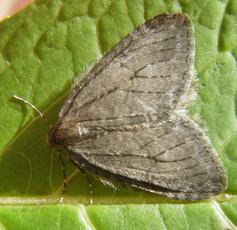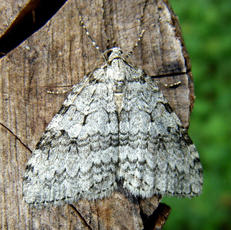November Moth - Epirrita dilutata
Wingspan 38-44 mm. Three of the members of the genus Epirrita, (November Moth, E. dilutata, Autumnal Moth, E. autumnata, and Pale November Moth, E. chrystyi), can be very difficult to separate on markings alone, especially as some show marked melanism. Where detailed examination has not taken place records should be added as Epirrita dilutata agg.
Wide range of habitats.
The adults fly from late September to November.
The larvae feed in late spring on a variety of trees and shrubs.
Occurring commonly over most of Britain. In a recent survey to determine the status of all macro moths in Britain this species was classified as common.
As an aggregate group the November Moths are common in our area but records confirmed by genitalia examination are few, hence its scarce recorded status in VC55. L&R Moth Group status = C (very scarce resident or rare migrant, but genitalia examination needed for secure identification)
Leicestershire & Rutland Map
Enter a town or village to see local records
MAP KEY:
Yellow squares = NBN records (all known data)
Coloured circles = NatureSpot records: 2020+ | 2015-2019 | pre-2015
UK Map
Species profile
- Common names
- November Moth
- Species group:
- Moths
- Kingdom:
- Animalia
- Order:
- Lepidoptera
- Family:
- Geometridae
- Records on NatureSpot:
- 54
- First record:
- 04/10/2010 (Calow, Graham)
- Last record:
- 09/10/2023 (Poole, Adam)
Total records by month
% of records within its species group
10km squares with records
The latest images and records displayed below include those awaiting verification checks so we cannot guarantee that every identification is correct. Once accepted, the record displays a green tick.
In the Latest Records section, click on the header to sort A-Z, and again to sort Z-A. Use the header boxes to filter the list.




